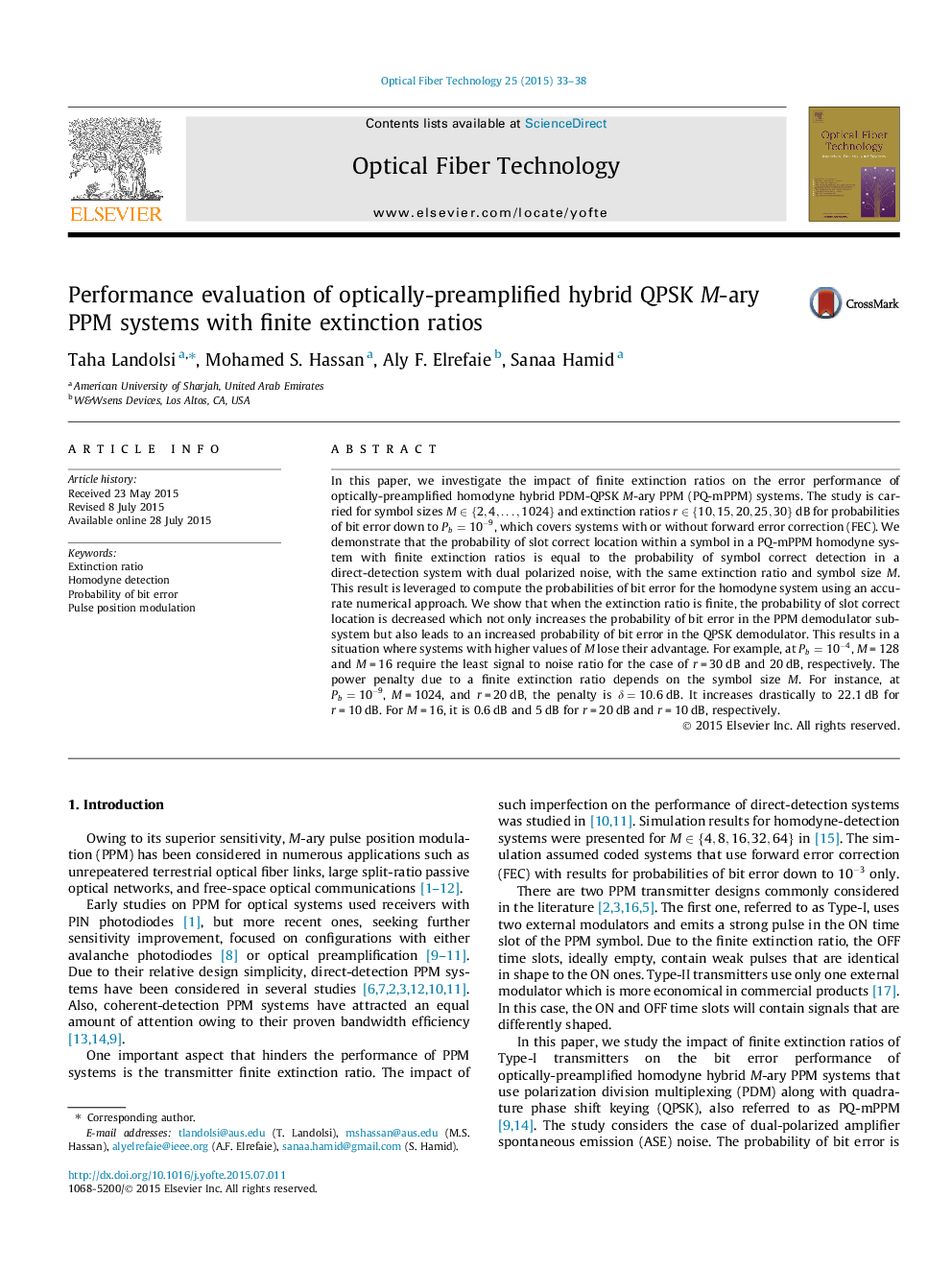| کد مقاله | کد نشریه | سال انتشار | مقاله انگلیسی | نسخه تمام متن |
|---|---|---|---|---|
| 463342 | 697018 | 2015 | 6 صفحه PDF | دانلود رایگان |

• Performance of optically-preamplified hybrid QPSK M-ary PPM systems with finite extinction ratios.
• Theoretical and numerical bit error rates for different symbol sizes and extinction ratios.
• Power penalties due to finite extinction ratio for both coded and uncoded systems.
• Decreased probability of slot correct location increases BER in both PPM and QPSK subsystems.
• Systems with higher values of M may lose their advantage.
In this paper, we investigate the impact of finite extinction ratios on the error performance of optically-preamplified homodyne hybrid PDM-QPSK M -ary PPM (PQ-mPPM) systems. The study is carried for symbol sizes M∈{2,4,…,1024}M∈{2,4,…,1024} and extinction ratios r∈{10,15,20,25,30}dB for probabilities of bit error down to Pb=3-9Pb=3-9, which covers systems with or without forward error correction (FEC). We demonstrate that the probability of slot correct location within a symbol in a PQ-mPPM homodyne system with finite extinction ratios is equal to the probability of symbol correct detection in a direct-detection system with dual polarized noise, with the same extinction ratio and symbol size M. This result is leveraged to compute the probabilities of bit error for the homodyne system using an accurate numerical approach. We show that when the extinction ratio is finite, the probability of slot correct location is decreased which not only increases the probability of bit error in the PPM demodulator subsystem but also leads to an increased probability of bit error in the QPSK demodulator. This results in a situation where systems with higher values of M lose their advantage. For example, at Pb=10-4Pb=10-4, M = 128 and M = 16 require the least signal to noise ratio for the case of r = 30 dB and 20 dB, respectively. The power penalty due to a finite extinction ratio depends on the symbol size M . For instance, at Pb=10-9Pb=10-9, M = 1024, and r = 20 dB, the penalty is δ=10.6dB. It increases drastically to 22.1 dB for r = 10 dB. For M = 16, it is 0.6 dB and 5 dB for r = 20 dB and r = 10 dB, respectively.
Journal: Optical Fiber Technology - Volume 25, October 2015, Pages 33–38